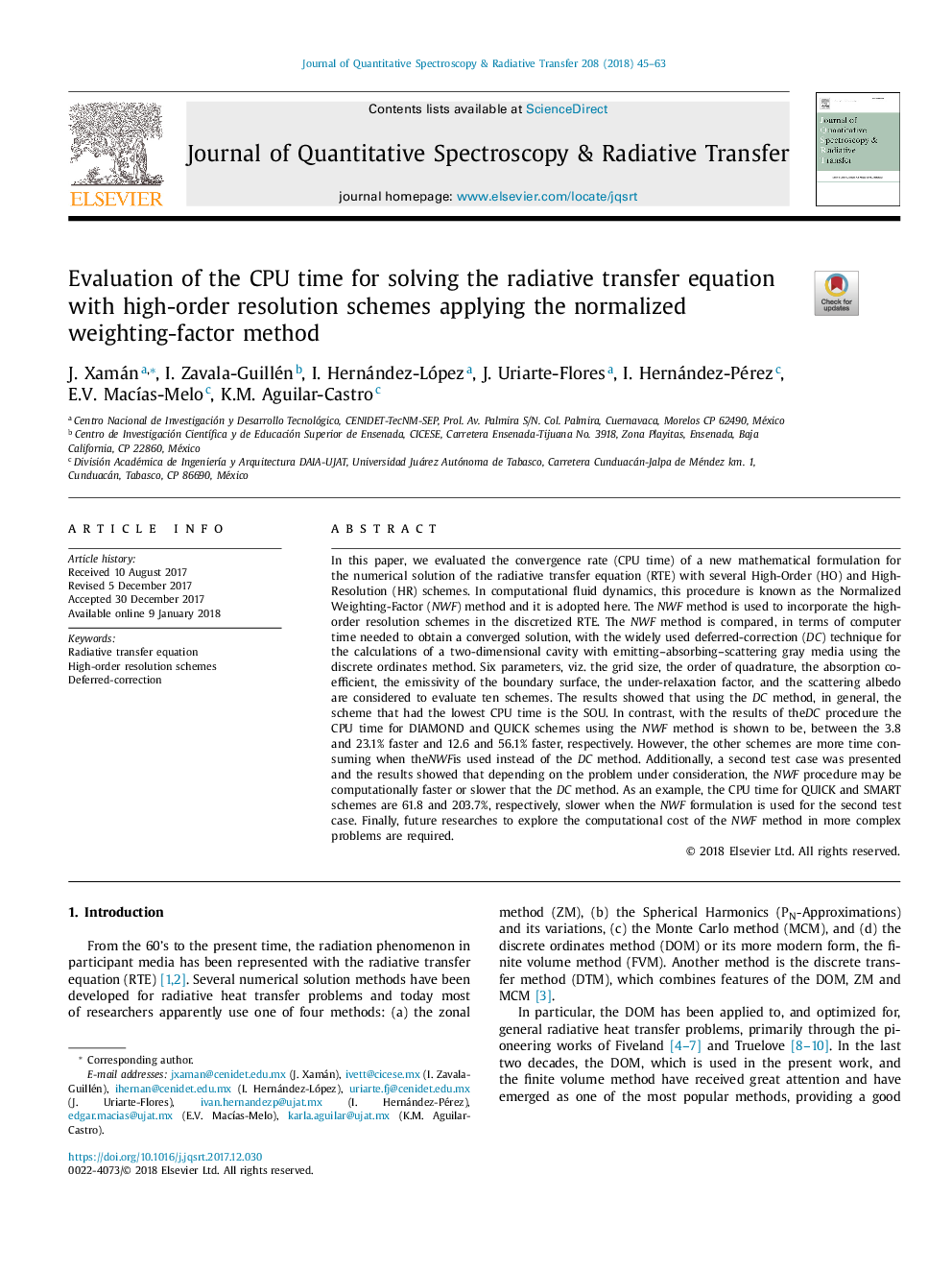| کد مقاله | کد نشریه | سال انتشار | مقاله انگلیسی | نسخه تمام متن |
|---|---|---|---|---|
| 7846182 | 1508607 | 2018 | 19 صفحه PDF | دانلود رایگان |
عنوان انگلیسی مقاله ISI
Evaluation of the CPU time for solving the radiative transfer equation with high-order resolution schemes applying the normalized weighting-factor method
ترجمه فارسی عنوان
ارزیابی زمان پردازنده برای حل معادله انتقال تابشی با طرح های قطعنامه بالا با استفاده از روش ضریب همبستگی نرمال
دانلود مقاله + سفارش ترجمه
دانلود مقاله ISI انگلیسی
رایگان برای ایرانیان
کلمات کلیدی
معادله انتقال تابشی، طرح های قطعنامه با کیفیت بالا، بازپرداخت معوق،
موضوعات مرتبط
مهندسی و علوم پایه
شیمی
طیف سنجی
چکیده انگلیسی
In this paper, we evaluated the convergence rate (CPU time) of a new mathematical formulation for the numerical solution of the radiative transfer equation (RTE) with several High-Order (HO) and High-Resolution (HR) schemes. In computational fluid dynamics, this procedure is known as the Normalized Weighting-Factor (NWF) method and it is adopted here. The NWF method is used to incorporate the high-order resolution schemes in the discretized RTE. The NWF method is compared, in terms of computer time needed to obtain a converged solution, with the widely used deferred-correction (DC) technique for the calculations of a two-dimensional cavity with emitting-absorbing-scattering gray media using the discrete ordinates method. Six parameters, viz. the grid size, the order of quadrature, the absorption coefficient, the emissivity of the boundary surface, the under-relaxation factor, and the scattering albedo are considered to evaluate ten schemes. The results showed that using the DC method, in general, the scheme that had the lowest CPU time is the SOU. In contrast, with the results of theDC procedure the CPU time for DIAMOND and QUICK schemes using the NWF method is shown to be, between the 3.8 and 23.1% faster and 12.6 and 56.1% faster, respectively. However, the other schemes are more time consuming when theNWFis used instead of the DC method. Additionally, a second test case was presented and the results showed that depending on the problem under consideration, the NWF procedure may be computationally faster or slower that the DC method. As an example, the CPU time for QUICK and SMART schemes are 61.8 and 203.7%, respectively, slower when the NWF formulation is used for the second test case. Finally, future researches to explore the computational cost of the NWF method in more complex problems are required.
ناشر
Database: Elsevier - ScienceDirect (ساینس دایرکت)
Journal: Journal of Quantitative Spectroscopy and Radiative Transfer - Volume 208, March 2018, Pages 45-63
Journal: Journal of Quantitative Spectroscopy and Radiative Transfer - Volume 208, March 2018, Pages 45-63
نویسندگان
J. Xamán, I. Zavala-Guillén, I. Hernández-López, J. Uriarte-Flores, I. Hernández-Pérez, E.V. MacÃas-Melo, K.M. Aguilar-Castro,
